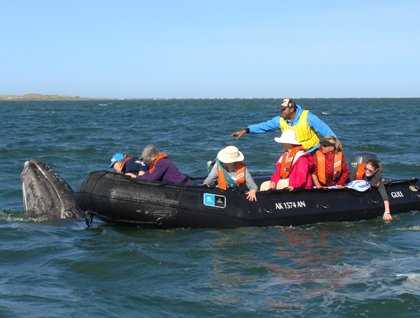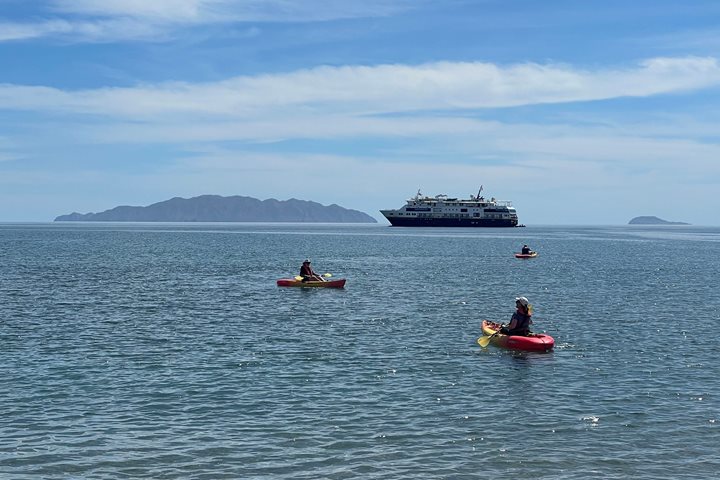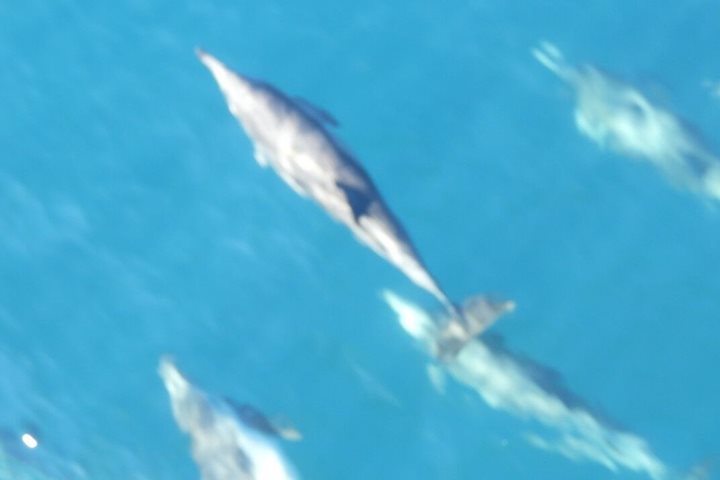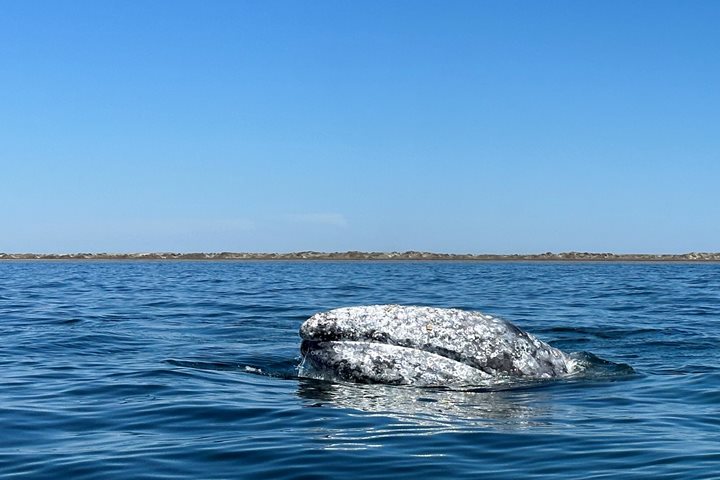Today we awoke on the National Geographic Sea Bird while floating in the protected and calm waters of Boca de la Soledad, the northernmost entrance to the beautiful coastal lagoon called Magdalena Bay, which is part of an extensive and complex wetland system present in the western side of the peninsula of Baja California. As we all knew, the gray whales come here every winter to give birth and nurse their calves, so we were eager to explore the lagoon and observe these magnificent, gentle, giant marine mammals. Throughout the day we went out in our inflatable crafts, and accompanied our excited guests to help them interpret the complex and fascinating set of behaviors offered by the whales, including spy hopping, breeching, nursing and rolling. Up to 35 pairs of cows and calves were seen in this section of the lagoon. Whales, as we noticed, can be identified individually by the white, black and gray gradations that form unique patterns on their skin, both in calves and their mothers. No whale is identical to another. This has allowed us to give them names, like Sofia, Maria, and so on, for the enjoyment of everyone.
Our guests also had the opportunity of exploring, the dune and mangrove ecosystems of Magdalena Island. Hundreds of cormorants and frigatebirds were seen, either flying or perched on the highest mangrove branches to avoid predation by coyotes, which also live on this barrier island. Scrub jays, white ibices, great blue herons, and diverse egret species showed themselves unexpectedly as our guests arrived at the mangrove patches. The sand dunes were vibrant due to the vivid green, yellow and purple colors provided by numerous pioneer plants, such as sand verbena, sea purselane, milkweed, iodine bush and rattleweed. When night fell upon the bay, local musicians performed for us on the ship, and a delicious dinner was served, followed by tres leches cake. This was a wonderful day for us, in the gray whales’ lagoon.









